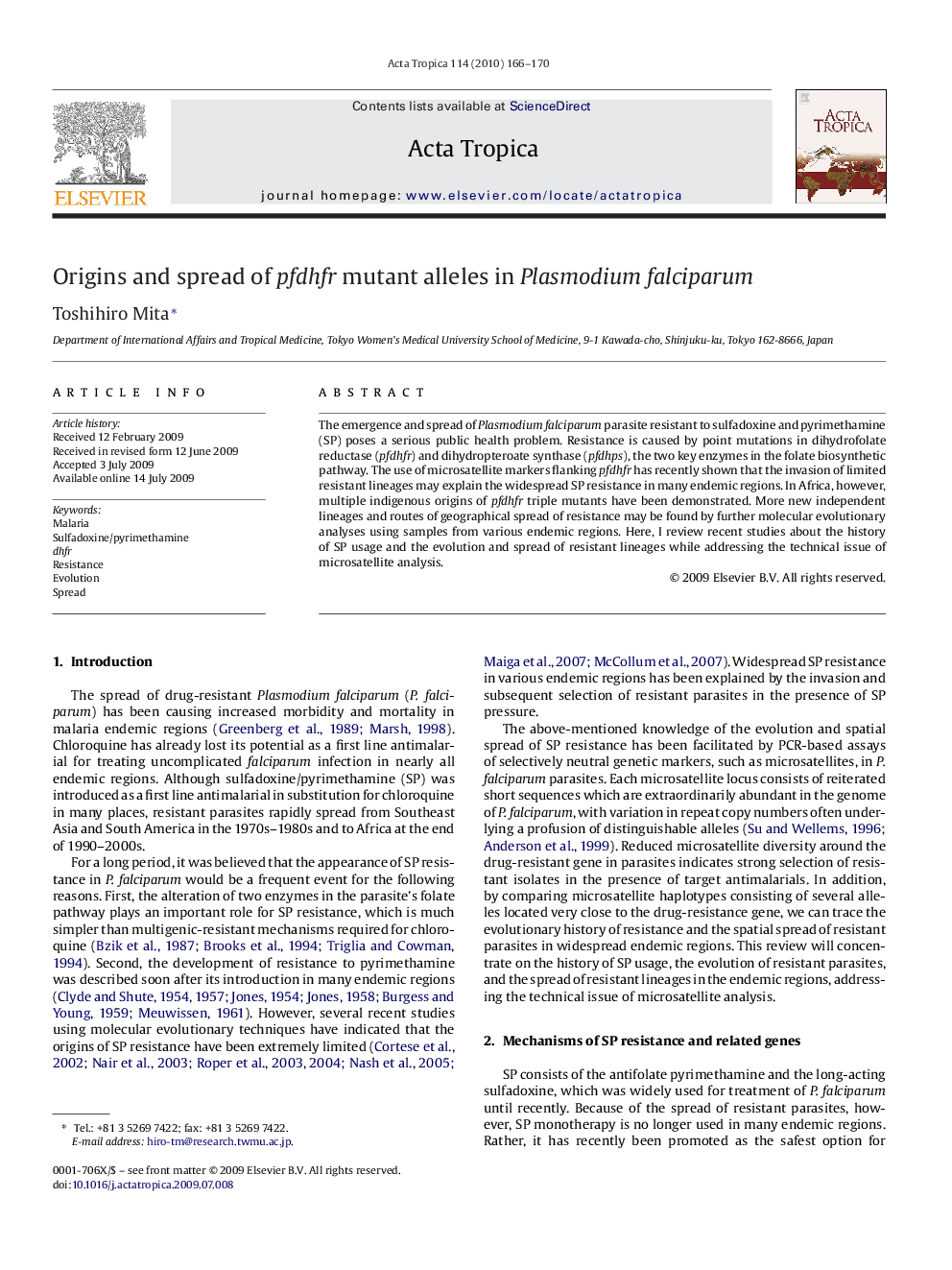| Article ID | Journal | Published Year | Pages | File Type |
|---|---|---|---|---|
| 3394150 | Acta Tropica | 2010 | 5 Pages |
The emergence and spread of Plasmodium falciparum parasite resistant to sulfadoxine and pyrimethamine (SP) poses a serious public health problem. Resistance is caused by point mutations in dihydrofolate reductase (pfdhfr) and dihydropteroate synthase (pfdhps), the two key enzymes in the folate biosynthetic pathway. The use of microsatellite markers flanking pfdhfr has recently shown that the invasion of limited resistant lineages may explain the widespread SP resistance in many endemic regions. In Africa, however, multiple indigenous origins of pfdhfr triple mutants have been demonstrated. More new independent lineages and routes of geographical spread of resistance may be found by further molecular evolutionary analyses using samples from various endemic regions. Here, I review recent studies about the history of SP usage and the evolution and spread of resistant lineages while addressing the technical issue of microsatellite analysis.
